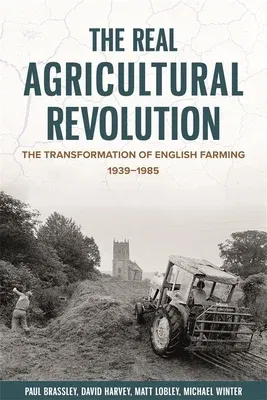An investigation into farming practices throughout a period of seismic
change.
WINNER of the British Agricultural History Society's 2022 Thirsk Prize
WINNER of the 2022 CHOICE Outstanding Academic Title Award
"This meticulously researched book gives a detailed and authoritative
history of agricultural change in the second half of the twentieth
century. The book skilfully weaves together the hitherto underexplored
individual returns of the Farm Management Survey with oral histories of
the farmers who enacted change on the ground to offer an incisive
account of the complex technological, political and cultural
developments which gave rise to some of the greatest changes in English
farming history. It will stand as the key reference point for those with
an interest in the history of agricultural change in Britain." Professor
Mark Riley, University of Liverpool
At the outbreak of the Second World War in 1939 British agriculture was
largely powered by the muscles of men, women, and horses, and used
mostly nineteenth-century technology to produce less than half of the
country's temperate food. By 1985, less land and far fewer people were
involved in farming, the power sources and technologies had been
completely transformed, and the output of the country's agriculture had
more than doubled. This is the story of the national farm, reflecting
the efforts and experiences of 200,000 or so farmers and their families,
together with the people they employed. But it is not the story of any
individual one of them. We know too little about change at the
individual farm level, although what happened varied considerably
between farms and between different technologies.
Based on an improbably-surviving archive of Farm Management Survey
accounts, supported by oral histories from some of the farmers involved,
this book explores the links between the production of new technologies,
their transmission through knowledge networks, and their reception on
individual farms. It contests the idea that rapid adoption of technology
was inevitable, and reveals the unevenness, variability and complexity
that lay beneath the smooth surface of the official statistics.

